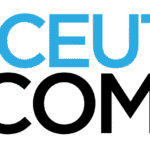Great Lakes Region Leads with New Training for 911 Dispatchers Handling Suicidal Callers
As Suicide Prevention Month continues, the International Academies of Emergency Dispatch® (IAEDTM) is reminding everyone of the continuing role of 911 Emergency Dispatchers in suicide prevention and praising three Emergency Communication Centers (ECCs) in the Great Lakes Region for their pioneering work on this challenge.

In 2023 alone, ECCs across the United States received at least 24 million calls involving a mental health crisis, compared to the 17 million calls, texts, and chats received by the 988 Suicide & Crisis Lifeline since its launch in 2022.
However, a recent survey of Emergency Dispatchers by the IAED, the standard-setting organization for emergency dispatch and response services—found that 40% felt they did not have adequate tools or guidance to manage callers with suicide risk and ideation. Ty Wooten, IAED Director of Governmental Affairs, said, “The majority of people in a mental health crisis still call 911, and we need better tools and training to handle these calls and deliver better outcomes.”
To address this need, in 2024 the IAED released Protocol 41: Caller in Crisis, a tool for 911 Emergency Dispatchers, including specialized training for suicide risk and ideation callers. When Emergency Dispatchers are talking with a caller in crisis, the Protocol guides them through a series of questions to determine whether to dispatch an emergency response or transfer the call to 988. The Protocol has an Emotional Control Tool with 20 different emotional states to help connect with and direct these fragile callers, e.g., to distance themselves from a weapon or come down from a rooftop, while first responders are on the way.
Brandon Miller, Executive Director of Illinois Valley Regional Dispatch (IVRD) in Peru, Illinois, admits that when he was an Emergency Dispatcher, he didn’t feel confident about what to say to callers experiencing suicidal ideation. “There are a lot of myths out there about what kind of things you should or shouldn’t say. And you can imagine the toll that takes on our Emergency Dispatchers.”
Last year, IVRD began transferring some calls to 988, in compliance with the state’s Community Emergency Services and Support Act, when his center and a dozen others in Illinois became pilot ECCs working with 988 by adopting Protocol 41. “It’s not just about transferring calls off,” Miller said. “It’s about giving your Emergency Dispatchers the tools and the ability to talk people through a crisis until the right responders arrive.”
In Plainfield, Indiana, Hendricks County Communications Center has also been an early adopter of Protocol 41. Meghan Monaco, Quality Assurance Manager, says: “There is more fluidity in how we address the patient and reassure them that we are listening to what they are saying.” Monaco says her center’s use of the Protocol is credited with saving three lives to date, with one Emergency Dispatcher even receiving a formal commendation from law enforcement partners.
In St. Paul, Minnesota, the state’s largest EMS provider, Allina Health Emergency Medical Services, implemented Protocol 41 in November 2024. Training and Compliance Specialist Jonathan Flynn notes that in most cases of suicidal ideation, the caller is contacting 911 for themselves, before acting, unlike most 911 calls in which some harm has already happened to a third party. “With a caller in a mental health crisis, Emergency Dispatchers have an immediate ability to impact that call. This is as close as they get to treating a patient.”
Flynn added, “By having this Protocol, you have given your telecommunicators a tool to alleviate somebody else’s trauma, to alleviate somebody else’s PTSD, to immediately intervene, and when they’re in their darkest place to literally give them hope, give them a way forward.”
So far, several hundred ECCs have implemented Protocol 41, and several thousand Emergency Dispatchers have completed the training.
For more information on Protocol 41, please contact us or the agencies identified above, or visit IAED’s sister organization, PriorityDispatch.net.
The International Academies of Emergency Dispatch is the standard-setting organization for medical, fire, police, and nurse triage emergency dispatch and response services worldwide and is the leading body of emergency services dispatch experts. Our various Boards and Councils work on behalf of over 83,000 members in 60 countries—and in coordination with other influential public safety organizations—to ensure that the comprehensive system covering all aspects of emergency dispatching is safe, fast, effective, and cutting-edge. IAED protocols are used in more than 4,257 communication centers across the world in 31 languages and have been time-tested across hundreds of millions of calls for medical, fire, police, and nurse triage dispatching. emergencydispatch.org.










